THE REDBIRD REVIEW
Only 66 games to go for the Cardinals. They went into the All-Star break with a 50-46 record and had their hands on the No. 2 wild-card ticket in the National League.
In the wild-card pacing, the Cardinals are perched between the No. 1 Braves and the No. 3 Mets. But it’s awfully tight out there, with six other NL teams lurking just 3 and ½ games or closer in the wild-card donnybrook.
The Cardinals are in a solid position to make a return to the postseason, a year after the 71-91 debacle of 2023. And though the FanGraphs Playoff Odds give first-place Milwaukee a 69.9 percent shot of winning the NL Central, the Cardinals can’t be ruled out.
The Cardinals have the National League’s best record (35-22) since the 12th of May. They have a higher winning percentage than the Brewers since April 24. And the Redbirds have six games against the Crew in a stretch that begins Aug. 20 and ends Sept. 4.
So there’s a chance. But only a moderate chance … or a slim chance … or virtually no chance … it depends on where you look for guidance.
St. Louis winning the division
Percentage of probability
+ Baseball Prospectus, 22.3%
+ FanGraphs, 17.6%
+ Austin Mock, The Athletic: 15.7%
+ Clay Davenport, 11.2%
+ Baseball Reference, 2.2%
From my view, here are the most important factors that will determine the Cardinals’ fortunes in the pursuit of the playoffs.
In the words of Tony LaRussa, let’s play a hard nine …
1) THE JULY 30 TRADE DEADLINE. High drama, a dud, or something in between? If I had to wager $5, I’d go with the something-in-the-middle option. The front office must enhance the team’s chances of making the postseason. The competition for a wild-card prize is frenzied.
Standing pat isn’t an option … Well, not unless management (a) wants to infuriate the fan base, (b) decrease ticket sales and revenue, (c) reinforce the perception that ownership is phlegmatic about winning, and (d) demoralize the clubhouse. A dumpster dive or back-alley pickup won’t pass inspection, either.
The Cardinals could use some assistance in several areas: a hitter to charge their low-grade right-handed power, a solid addition to the rotation, and finding another reliever to protect the bullpen from tired-arm syndrome. President of baseball operations John Mozeliak and GM Michael Girsch are on the clock.
2) WILL THE STARTING ROTATION HOLD UP? Miles Mikolas, Sonny Gray, Kyle Gibson and Lance Lynn have an average age of 35.5 years. When Mozeliak signed Gray, Lynn and Gibson to free-agent contracts last winter to join Mikolas, the age factor was prominent in media-driven narratives about the rotation’s vulnerability.
Beyond the custom of counting birthday candles and fearing a downturn, there were some reasons for potential concern. Let’s take a look:
– In 2023, Lynn had a bad ERA before the All-Star break and a bad ERA after the break. But there was a big drop in his strikeout rate. Lynn struck out 28 percent of his hitters faced in the first half, and that rate fell to 18.2 percent after the break. And to fast forward into the current season, Lynn’s strikeout for July (so far) is just 17.4 percent.
– Gray: He’s held up well over the course of a season from 2021 through 2023, but there were some differences. Over the three years Gray had a 2.74 ERA in the first three months of the season and a 3.72 during the final three months. There was also a two percent drop in strikeout rate from the first three months to the last three months.
– Mikolas: From 2021 through 2023, Mikolas had a 3.34 ERA before the All-Star break and a 4.85 earned-run average after the break. His homers-allowed rate spiked during the second half, and there was a slight dip in strikeout rate.
– Gibson: Excluding the 2020 Covid season, Gibson had a 4.03 ERA before the All-Star break from 2019 through 2023. And after the All-Star break his ERA shot up to 5.52.
More recently, Cardinals starters have a 5.31 ERA since June 28. Before that, their ERA was 4.27. And the rotation’s ERA for July is 6.13.
3) THE BULLPEN BIG THREE. The Cardinals lead the majors with 35 saves. A save has been attached to 70 percent of their wins; that’s the largest percentage in the majors. St. Louis relievers are No. 2 in the majors for the most high-leverage innings pitched, and No. 5 in medium-leverage innings pitched. The Cardinals have played 96 games, and 69 percent of the outcomes in those competitions have been determined by three runs or fewer. And 51 percent of their games have had a final margin of two runs or fewer. Their 18-12 record in one-games is the fourth best in the majors.
The Cardinals don’t have the high-powered offense that fuels a bunch of blow-out victories, so the abundance of closely contested games puts a lot of pressure and stress on a bullpen. And we can’t ask for the St. Louis bullpen to do better than it has in protecting late leads.
- When leading through six innings: 33-4
- When leading through seven innings: 40-2
- When leading through eight innings: 44-0
That’s tremendous. And much of the protecting, resisting and saving has been done by relievers Andrew Kittredge, JoJo Romero and Ryan Helsley. Manager Oli Marmol has expanded his high-leverage specialists to include the likes of Ryan Fernandez and John King. Matthew Liberatore, Chris Roycroft and Kyle Leahy have taken on more important roles as needed.
This bullpen is working very well; the Cardinals have allowed an average of 1.05 runs from the seventh through the ninth inning, a stingy rate that’s third best in the majors. In the last two innings (8th and 9th) the Cardinals have been grazed for 0.53 runs per game, which is the second lowest in the NL and second overall.
The STL relievers have a demanding job and are critically important to the team’s success. The risk factor is substantial. Suppose the bullpen can’t hold firm? Suppose the relievers begin to crack? Simply stated, a lot of these close wins would flip to close losses.
And I’m keeping my eye on Kittredge, Romero and Helsley.
Here’s why
* Mr. Kittredge: Here’s the breakdown. There’s been some obvious erosion in performance. First 15 appearances: Kittrege had a 1.20 ERA, 26.7% strikeout rate, a 48.6 percent ground-ball rate and allowed an average of 0.60 homers per nine innings. Opponents had a .283 slugging percentage and .553 OPS against him. But in the last 20 appearances? Look out: 4.76 ERA, 39.8 percent ground-ball rate, 22.8% strikeout rate, and an average yield of 2.22 homers per nine innings. Opponents had a .518 slug and .830 OPS against him.
Kittredge appeared in only 31 games across 2022-2023 as he dealt with elbow issues and Tommy John surgery. His career high for appearances in a season is 57 for Tampa Bay in 2021. He worked in 45 games for the Cardinals before the All-Star break.
* Mr. Romero: In his first 27 appearances, he carved a 1.24 ERA and struck out 26 percent of his batters faced. But in his last games, Romero has a 5.40 ERA, has been belted for three homers and a .532 slugging percentage. And – alarmingly – JoJo has struck out only six of 54 batters since June 3. That’s 11 percent.
* Mr. Helsley: The bottom line is unconditionally positive. The Cards closer leads the majors with 32 saves, and has only one blown save in a standard, nine-inning game that didn’t include one of Rob Manfred’s gimmicky ghost runners at second base to start the 10th inning.
Helsley hasn’t been as efficient in recent weeks. Since May 25, Helsley has a 3.60 ERA and has a billowing 14.4 percent walk rate. In his first 22 appearances of the season Helsley walked only 4.8 percent of hitters faced, so the increase in walks is a concern. And after attacking for a 29 percent strikeout rate in his first 22 appearances, Helsley has punched out 26.6% of hitters since May 25.
4) MORE IMPACT FROM RIGHT-HANDED HITTERS. The team’s RHB are hitting for a solid average, and their collective onbase percentage is an above-average .317. But the problem – and the shortage – is in the power department. The St. Louis right-swinging hitters are 20th in slugging percentage (.381), 25th in doubles, 27th in homers (41) and 27th in Isolated Power.
Three of the Cards’ right-handed hitters have performed at a level that’s at least nine percent above league average. Willson Contreras has put up imposing numbers in the two vital areas – getting onbase and hitting for power. It was a blow for the offense to lose Contreras to the IL for six weeks. Ivan Herrera was 18 percent above the league-average level offensively before getting injured on June 18, and we’re all pleased by just about everything Masyn Winn has done. But once we get past Contreras, Winn and Herrera … it’s pretty uninspiring.
The team’s other six right-handed batters collectively batted .233 with a .310 OBP and .349 slug before the break. They homered 23 times in 970 at-bats; that’s one every 42 ABs. Contreras, Winn and Herrera combined for 101 of the 177 RBIs cashed in by the team’s right-handed bats.
If Contreras avoids injury and stays in the lineup, he’ll improve the situation. In the first half, among major-league hitters with a minimum 200 plate appearances, Contreras was one of only seven to put together a combination of a .400 onbase percentage or higher and a .500 slugging percentage or better. The other six were Juan Soto, Aaron Judge, Shohei Ohtani, Bryce Harper, Christian Yelich and Steven Kwan.
Other than that, the Cardinals will pray to the baseball gods for the restoration of power in the swings taken by Paul Goldschmidt and Nolan Arenado. Goldy might be able to get something thumping; he has a .447 slugging percentage and 11 homers during the team’s 35-22 stretch. Or perhaps a light bulb will click on inside Jordan Walker’s brain down in Memphis.
I don’t think Tommy Edman will return from the IL and turn into the Tommy Pham who slugged .520 for the 2017 Cardinals. The switch-hitting Edman is better from the right side, but let’s not get carried away. And since I mentioned Pham … I don’t think the 2024 Pham would morph into the 2017 Pham if Mozeliak brought him back. He’s slugging .368 this season.
Other than clutching good-luck charms, burning sage and wishing and hoping for the best, it is up to the front office to acquire a right-handed bat that can inflict some damage. And if none of this happens, the stagnation will persist. The team’s current .381 slug from their right-handed hitters would be the second lowest in a season since the Bill DeWitt Jr. ownership group took over before the 1996 season.
4a) GOLDSCHMIDT AND ARENADO. SIGH. I just want to throw this in because I know many are saying or writing, “The Cardinals have to get Goldy and Arenado going! That’s all it takes!” That sure would be nice. But it’s also a tired subject. Too many of us speak about these two proud men as if their big break-out offensive eruption, their summer of bat-wielding terror and destruction, is something realistic and inevitable … just a matter of time! The pep squad never tires of gushing forth with this narrative. But it isn’t that simple, and there’s no reason to duck the truth here. They’re not the same hitters. In this case, I’d be happy to be wrong. I look at it this way: can they get hot for a couple of weeks? Maybe three weeks? And help the Cardinals win a few more games? Sure. That’s reasonable. I like the thought. And if they do heat up, I’ll enjoy watching. And if it does happen, I’ll enjoy the predictable overreaction.
5) SWING THE DAMN BAT. Just some friendly advice from the neighborhood stat man … this season Cardinal batsmen have MLB’s third-highest percentage of 0-2 counts and the second-largest percentage of 1-2 counts. Before the All-Star break only four MLB teams had a higher percentage of called strikes than St. Louis. The Cardinals do a nice job of surviving those disadvantageous counts; they rank seventh in the majors this season with a .176 batting average on 0-2 and 1-2 pitches. And they’re 10th in the majors in home runs blasted on 0-2 and 1-2 pitches. But that doesn’t mean it’s beneficial to constantly fall into so many two-strike counts.
6) NEED MORE THREE-RUN HOMERS. The Cardinals aren’t much of a home-run offense, and they have to do a lot of other things right to score runs. With such a limited quick-strike capability, the Cardinals frequently strain to put runs on the board. They rank 25th overall and 13th in the NL with 94 runs this season. They’ve bombed only seven three-run HR shots all season, the fewest by an NL team. The Cardinals have 55 solo home runs; that accounts for 55.8 percent of all their homers in 2024. Among NL teams only the Dodgers and Marlins have a higher percentage of solo home runs.
7) THE CHALLENGE. Brendan Donovan, Alec Burleson, Willson Contreras and Masyn Winn must build on their first halves and keep going strong through the end of the season. And the Cardinals need more, and better, from Nolan Gorman and Lars Nootbaar. Tommy Edman must resurface and do what he does best: play multiple positions with skill, propel the squad with his speed and excellent baserunning, and provide the all-purpose value that created the second-highest amount of WAR (15.2) among Cardinals from 2018 through 2023.
8) IS THERE A HOME FIELD ADVANTAGE? I wonder about that. The Cardinals got off to a crummy start early on at Busch Stadium this season, got rolling, and appeared to have reclaimed their home territory to make it a hostile, unwelcoming yard for visiting teams. But there’s been a relapse. The Cardinals went 2-4 against the Royals and Cubs at Busch Stadium before the break. And the Redbirds are 5-7 at home since June 26. The home slump left the Cardinals with a 26-22 record at Busch this season. That’s the seventh-best home record by an NL team this season. Having an unsecured homefield would jeopardize their bid to make the playoffs. The remaining home schedule includes 27 games against the Mets, Rays, Dodgers. Brewers, Padres, Mariners, Reds, Pirates and Guardians.
9) NAVIGATING A MUCH TOUGHER SCHEDULE: Based on the collective winning percentage of their opponents, the Cardinals had the seventh easiest schedule in the majors before over their first 96 games. But that will change. According to the site Tankathon, STL’s remaining schedule is rated as the fifth most difficult overall and is the third hardest among NL teams.
Here are some bits on this:
* The Cardinals trail first-place Milwaukee by 4 and ½ games in the NL Central. If the remaining schedules mean anything, the Brewers have an advantage. As noted, the Cardinals have the fifth toughest schedule in the majors from this point forward. Milwaukee’s degree of schedule difficulty is 17th.
* Among the other NL Central clubs, only Pittsburgh has a more challenging remaining schedule than St. Louis. The Cubs will face the 11th easiest schedule overall, and the fifth easiest among NL teams.
* Among NL teams that are vying for a playoff spot but do not hold one now, just about every one of them has an easier schedule the Cardinals from here on out: Giants, Mets, Padres, Reds and Diamondbacks.
* The Cardinals have 19 games against teams that would compete in the postseason if the playoffs started today. That represents 29 percent of STL’s remaining schedule.
* The Cardinals will have 23 games against teams that are within 3 and ½ games of a playoff spot. Another opponent, Tampa Bay, is within 5 and ½ games of a wild–card ticket in the American League.
* If we include Tampa Bay, 45 of the STL’s 66 remaining games will be played against teams that either hold a playoff spot right now or are no worse than 5 and ½ games away from getting in. That represents 68 percent of the Cardinals’ remaining games.
* Thirty of the Redbirds’ 66 games (45.4%) will come against teams that are .500 or better right now. And that’s a challenge because the Cardinals are 23-28 this season when facing teams that went into the All-Star break at .500 or better.
Good luck, men.
Thanks for reading …
–Bernie
A 2023 inductee into the Missouri Sports Hall of Fame, Bernie has provided informed opinions and perspective on St. Louis sports through his columns, radio shows and podcasts since 1985.
Please follow Bernie on X @b_miklasz and Threads @miklaszb
For weekly Cards talk, listen to the “Seeing Red” podcast with Will Leitch and Miklasz. It’s available on Apple, Spotify, or where you get your podcasts. Follow @seeingredpod on X for a direct link.
Stats used in my baseball columns are sourced from FanGraphs, Baseball Reference, StatHead, Baseball Savant, Baseball Prospectus, Brooks Baseball Net, and Sports Info Solutions and Cots Contracts unless otherwise noted.
For the last 36 years Bernie Miklasz has entertained, enlightened, and connected with generations of St. Louis sports fans.
While best known for his voice as the lead sports columnist at the Post-Dispatch for 26 years, Bernie has also written for The Athletic, Dallas Morning News and Baltimore News American. A 2023 inductee into the Missouri Sports Hall of Fame, Bernie has hosted radio shows in St. Louis, Dallas, Baltimore and Washington D.C.
Bernie, his wife Kirsten and their cats reside in the Skinker-DeBaliviere neighborhood of St. Louis.



